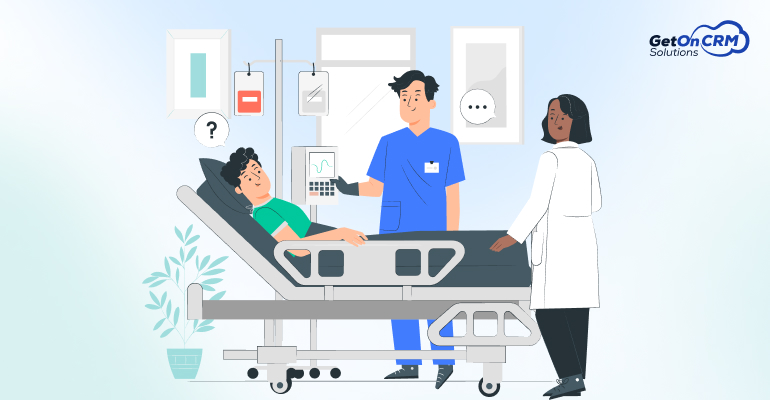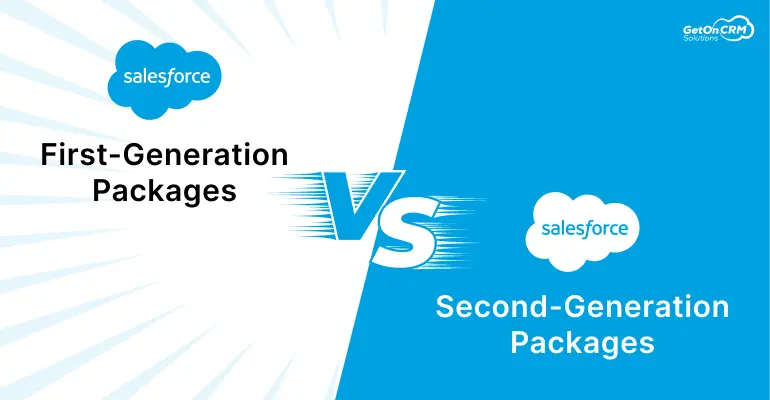The healthcare industry is undergoing a monumental shift driven by rapid advancements in technology and automation. This transformation is not just a fleeting trend; it’s a new era fundamentally reshaping how patient care is delivered. From telemedicine to robotic surgeries, how care providers interact with and treat patients is evolving unprecedentedly. This article delves into the various aspects of healthcare automation and its profound impact on patient care.
The Current State of Healthcare Automation
Overview of Healthcare Automation in 2023
A significant uptake in automation technologies marks the landscape of healthcare in 2023. These include Artificial Intelligence (AI), Machine Learning (ML), Robotic Process Automation (RPA), and Internet of Things (IoT) applications. These technologies are integrated to enhance patient care, improve operational efficiencies, and reduce healthcare costs.
Key Technologies Driving Changes in Healthcare
Key technologies such as AI and IoT are at the forefront of this change. AI is changing patient diagnostics and predictive analytics, while IoT is being used to monitor patient health through wearables and other connected devices. The data generated by these technologies are invaluable in crafting personalized patient care strategies.
The Role of Salesforce in Healthcare Automation
Introduction to Salesforce’s Healthcare Solutions
Salesforce in the Healthcare Ecosystem
- Salesforce, known for its robust Customer Relationship Management (CRM) solutions, has made significant inroads into the healthcare sector. Its suite of tools is designed to cater to the unique demands of healthcare organizations, from managing patient data to enhancing care coordination.
- The Salesforce Cloud services, for instance, offers a unified patient view, facilitating more personalized care and efficient management of patient interactions. This platform integrates various data sources, providing a comprehensive picture of patient health and history.
Improving Patient Management and Care Delivery
- Salesforce’s healthcare solutions go beyond data management. They encompass patient engagement, healthcare team collaboration, and operational efficiency. These tools help streamline appointment scheduling, patient follow-up, and care coordination.
- The impact of these solutions extends to better resource management, reduced administrative burdens, and more time for healthcare providers to focus on patient care. Having a 360-degree view of the patient journey helps deliver tailored healthcare experiences.
Salesforce Implementation in Healthcare
1. Transforming Patient Engagement and Care Coordination
- Background: A regional healthcare provider servicing over 300,000 patients annually faced challenges in patient engagement and care coordination across its 15 departments.
- Salesforce Implementation: Salesforce Cloud was implemented to create a centralized patient engagement system. It integrated patient data from all departments, providing a holistic view of each patient’s health journey.
- Results: Post-implementation, patient engagement metrics surged by 25%. The provider also saw a 30% reduction in redundant diagnostic procedures attributed to improved care coordination. Patient satisfaction scores, measured through follow-up surveys, increased by 40%, reflecting enhanced patient experiences.
2. Streamlining Clinical Workflows and Data Management
- Background: A multi-specialty hospital with over 500 beds struggled with inefficient clinical workflows, leading to an average patient wait time of 50 minutes.
- Salesforce Implementation: The hospital adopted Salesforce for streamlined workflow management and integrated patient data systems. That included Salesforce Service Cloud for managing appointments and Salesforce Analytics for data-driven decision-making.
- Results: Clinical workflows were optimized, reducing patient wait times by 35%. The data centralization led to a 20% improvement in clinical decision-making accuracy. The hospital also recorded a 15% increase in operational efficiency, with reduced time spent on administrative tasks.
3. Expanding Telehealth Services with Remote Monitoring
- Background: Amidst rising demand for telehealth, a healthcare network with over 200,000 annual outpatient visits sought to enhance its remote patient monitoring capabilities.
- Salesforce Implementation: Salesforce’s telehealth solutions were integrated, enabling better remote monitoring and patient data management. This included real-time health tracking and seamless virtual consultation capabilities.
- Results: The network expanded its telehealth services by 50%, reaching remote and underserved areas. Chronic disease management outcomes improved by 40% due to effective monitoring and timely interventions. Patient adherence to treatment regimens increased by 45%, and overall satisfaction with telehealth services rose by 60%.
4. Enhancing Patient Onboarding and Streamlining Insurance Processes
- Background: A healthcare clinic servicing 10,000 patients yearly faced bottlenecks in patient onboarding and insurance verification, with a 25% error rate in insurance processing.
- Salesforce Implementation: The clinic integrated Salesforce to automate patient onboarding and insurance verification. It included Salesforce Health Cloud for patient management and custom-built Salesforce automation for insurance processes.
- Results: The automation led to a 70% reduction in patient onboarding time and a 90% accuracy rate in insurance verification. Claim denials due to administrative errors decreased by 50%, positively impacting the clinic’s financial performance.
Telemedicine and Remote Care
Expansion of Telemedicine Services
Telemedicine has seen explosive growth, particularly accelerated by the COVID-19 pandemic. It has enabled patients to receive medical consultation and care remotely, breaking geographical barriers and making healthcare more accessible.
Impact of Remote Care on Patient Access and Convenience
Remote care has significantly increased access to healthcare services, particularly for those in remote or underserved areas. It offers the convenience of receiving medical advice without needing physical travel, which is particularly beneficial for patients with mobility issues or those requiring frequent monitoring.
Robotic Process Automation (RPA) in Healthcare
Definition and Role of RPA in Healthcare
RPA refers to using software robots or ‘bots’ to automate repetitive and time-consuming administrative tasks in healthcare. That includes patient scheduling, billing, data entry, and claims management. RPA streamlines these processes and reduces the scope for human error.
Examples of RPA in Action in Healthcare Settings
RPA is used in healthcare settings to automate patient appointment scheduling, improving efficiency and patient satisfaction. It’s also being employed in claims processing, speeding up the reimbursement cycle and reducing the administrative burden on healthcare staff.
Artificial Intelligence in Enhancing Patient Care
AI in Diagnostics and Treatment Planning
AI algorithms are increasingly used for diagnostic purposes, such as interpreting imaging results or analyzing medical histories to suggest treatment plans. These AI systems can detect patterns and anomalies that might be missed by the human eye, leading to early and more accurate diagnoses.
AI’s Role in Personalized Medicine
AI is pivotal in developing personalized medicine strategies. By analyzing vast amounts of patient data, AI can help tailor treatments to individual patient needs, considering their genetic makeup, lifestyle, and other health-related factors.
Also Read: Generative AI and Einstein GPT: The Future of Customer Service
The Integration of IoT in Healthcare
Use of Wearable Devices for Patient Monitoring
The Internet of Things (IoT) has become a cornerstone in modern healthcare, with wearable devices like smartwatches and fitness trackers monitoring patient vitals in real-time. These devices provide continuous data streams, enabling proactive health management and alerting healthcare professionals to potential health issues before they become acute.
Benefits of IoT in Continuous Health Tracking
IoT facilitates a more connected healthcare experience. Real-time data collection enables a comprehensive understanding of a patient’s health over time, allowing for early intervention and more effective treatment strategies. This approach is particularly beneficial in managing chronic conditions such as diabetes or heart disease.
Navigating Ethical and Regulatory Challenges
Issues Surrounding Data Privacy and Security
As healthcare increasingly relies on digital technologies, ensuring the privacy and security of patient data becomes paramount. Healthcare providers must navigate complex regulatory landscapes like HIPAA and GDPR to protect sensitive patient information.
Balancing Innovation with Ethical Considerations
Innovations in healthcare technology must be balanced with ethical considerations. That includes ensuring equitable access to these technologies and addressing AI and machine learning concerns, such as algorithmic bias.
Improving Healthcare Processes
Automation in Billing and Claims Management
Healthcare automation streamlines billing and claims management processes, reducing administrative burdens and improving the accuracy of billing operations. It leads to a more efficient healthcare system and better patient satisfaction.
Streamlining Operations through Automated Solutions
Automated solutions in healthcare extend beyond billing to include patient scheduling, medical record management, and supply chain logistics. These technologies enable healthcare providers to focus more on patient care and less on administrative tasks.
Innovations in Healthcare Automation
The Rise of Robotic Surgeries
Robotic Surgeries: The Future of Precision Medicine
- The integration of robotics in surgery represents a significant leap in medical technology. These robotic systems, guided by surgeons, enhance precision and control during surgical procedures. This precision is particularly crucial in complex surgeries where the margin for error is minimal.
- Robotic surgery has been gaining traction across various fields, including urology, gynecology, and cardiothoracic surgery. These systems provide a high-definition, magnified 3D view of the surgical site, allowing for superior visibility and accuracy.
Impact and Case Studies
- A notable example includes the da Vinci Surgical System, which has been instrumental in performing minimally invasive surgeries. Patients undergoing robotic surgeries often experience less pain, lower risk of infection, shorter hospital stays, and quicker recovery times.
- Another case study is the Mako Robotic-Arm Assisted Surgery system, used primarily for knee and hip replacements. This technology has been pivotal in increasing the precision of implant positioning, which is crucial for the success of these procedures.
Leveraging AI for Accurate Diagnostics
AI in Diagnostics: Transforming Patient Analysis
- Artificial Intelligence (AI) is revolutionizing the diagnostic field in healthcare. AI algorithms can analyze medical images such as X-rays, MRIs, and CT scans with a level of precision and speed unattainable by human practitioners.
- These AI systems can detect subtle patterns and anomalies in the images, aiding in the early detection of diseases such as cancer, neurological disorders, and heart conditions.
From Detection to Treatment Planning
- AI’s impact goes beyond diagnostics. It plays a crucial role in treatment planning, offering insights based on data-driven analysis. For example, in oncology, AI algorithms can analyze a tumor’s characteristics and recommend personalized treatment protocols, increasing the efficacy of the treatment.
- In chronic disease management, AI tools help monitor patient data, predict exacerbations, and suggest modifications in treatment plans, thereby preventing hospital readmissions and improving patient outcomes.
Enhancing Patient Interaction
Role of Virtual Health Assistants
Virtual Assistants in Patient Care
- Virtual health assistants, powered by AI and machine learning, redefine patient care. They are increasingly used for scheduling appointments, reminding patients about medications, and providing answers to health-related queries.
- These virtual assistants, available 24/7, offer convenience and immediate support, improving patient engagement and satisfaction. They can handle routine inquiries, freeing medical staff to focus on more complex patient needs.
Benefits and Challenges
- The benefits of virtual health assistants include improved efficiency, reduced workload for healthcare staff, and enhanced patient engagement. They provide a bridge between patients and healthcare providers, ensuring continuous communication.
- However, challenges exist in securing these systems to understand and process complex medical language. Providing the empathy and personal touch essential in healthcare is also a significant challenge.
Future Trends in Healthcare Automation
Predictions for Future Advancements
Emerging Technologies on the Horizon
- The future of healthcare automation looks promising with the integration of emerging technologies like blockchain for secure patient data management, advanced genomics for personalized medicine, and nanotechnology for innovative treatments.
- These technologies are poised to revolutionize patient care further, making it more personalized, efficient, and accessible.
Potential for Disruption and Enhancement in Patient Care
- These advancements can disrupt traditional healthcare models, leading to more patient-centered care. The integration of these technologies is expected to enhance diagnosis, treatment, and patient monitoring, significantly improving healthcare outcomes.
The Impact of Emerging Technologies on Patient Care
Transformative Potential of New Technologies
- The incorporation of advanced technologies is set to transform the healthcare landscape. For instance, blockchain technology promises to create more secure and efficient ways of handling patient data, reducing the risk of breaches and errors.
- Nanotechnology in medicine offers the potential for highly targeted drug delivery systems and improved imaging techniques, enhancing the diagnosis and treatment of diseases.
Preparing for the Future
- Healthcare providers must stay abreast of these emerging technologies to integrate them into their practices effectively. That requires continuous learning and adaptation to ensure that these new tools are used to their full potential in enhancing patient care.
Also Read: Salesforce Data Cloud: Bridging The Gap Between Data And Customer Experiences
Conclusion
The exploration into healthcare automation and the role of Salesforce illustrates a significant transformation in the healthcare industry. Technologies like Salesforce are not just modern tools but are pivotal in reshaping healthcare delivery, enhancing patient care, and improving operational efficiencies.
Salesforce solutions, adeptly implemented by salesforce silver consulting partner GetOnCRM Solutions, demonstrate the potential for a more efficient, patient-centric healthcare system. As healthcare continues to evolve, integrating such technologies remains critical to advancing patient care.
Frequently Asked Questions on Patient Care in the New Era of Healthcare Automation
How does healthcare automation improve patient care?
Automation reduces administrative tasks, speeds up appointment scheduling, and provides patients with faster access to care—improving satisfaction and outcomes.
Can automation help healthcare staff?
Yes. It frees staff from repetitive tasks, allowing them to spend more time on direct patient care and medical decision-making.
Does healthcare automation improve accuracy?
Absolutely. Automated systems reduce errors in records, prescriptions, and billing—ensuring patients receive correct treatments and providers avoid costly mistakes.
How does automation personalize patient care?
By analyzing health data, automation helps providers recommend tailored treatment plans, reminders, and follow-ups specific to each patient’s needs.
Is healthcare automation secure?
Yes. Platforms use encryption and compliance measures like HIPAA to protect sensitive medical data while ensuring smooth operations.























